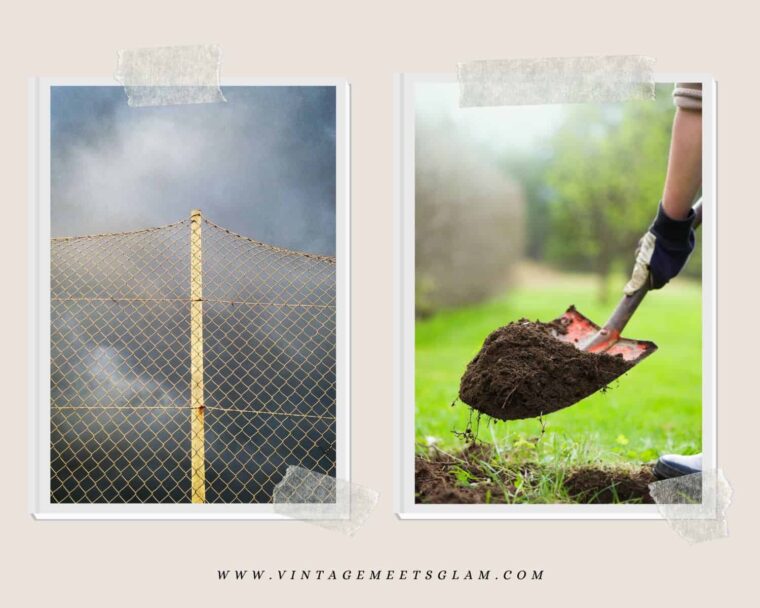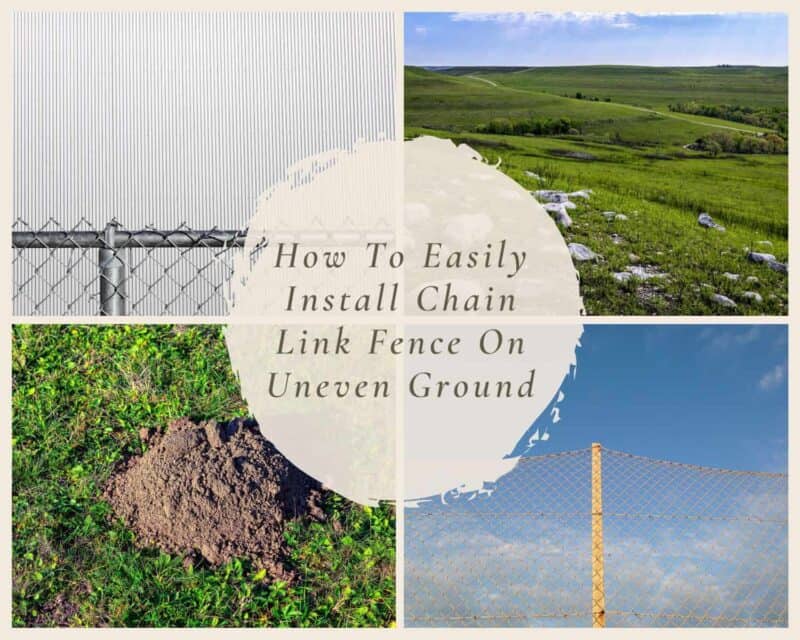Chain links are one of the most durable and efficient fence options you can use in your home. Whether you live in the countryside, or in the urban areas, chain link fences offer security against intruders and wild animals such as deer. However, installing a chain link can be challenging especially when working on uneven ground.
The chain link should not just look like your basic suburban backyard fence. You want something just as sturdy but with some style and panache. So how do you make sure the fence is level?
Here’s everything about installing chain link fences on uneven ground:
Step 1 – Measure
You need to know how much of an incline to space your posts accordingly.
It’s also important to measure the height of your fence and calculate how many feet apart they should be placed, as well as how wide each post needs to be (for it to support the weight of your fence).
In addition to these measurements, note how tall each post should be. This step will ensure that when you’re standing inside your fence looking outwards towards someone at eye level, they won’t see any part of their body sticking out through the slats—a common mistake many first-timers make when installing chain link fencing.
Step 2 – Buy Materials
When buying materials, you want to be sure you have enough to finish the job. You should also make sure you buy the right tools for the job, which means that if you are installing a vinyl fence in an area where water will splash on it, then plastic screws won’t be as durable as galvanized steel ones—or vice versa.
The other thing that can save you time and money is buying materials designed for your climate. A specific material that works well in one region doesn’t mean it will work well in another with different conditions. How does this apply to chain link fences?
Well, for example, if rainwater is likely to collect around your yard, then it would make sense not to use pressure-treated wood posts since they might rot away due to exposure over time (especially if they’re standing in damp soil).
On the other hand, if there isn’t much water around, then pressure-treated wood posts would probably last longer than untreated ones since they don’t have any additional moisture coming into contact with them on top of being exposed directly by raindrops falling from above–which means less chance of rot happening during rainy seasons when most homeowners forget about maintenance chores like checking their fences regularly.
Step 3 – Cut Your Posts
Cutting your posts to length, width, and height is the first of several steps to help you achieve your desired fence length. The best method is to use a post cutter, which allows you to make straight cuts on both sides of each post.
To use a post cutter:
- Set up your fence so that the shorter end lines up with, the shorter end of your string line (which should be parallel with one side of your house).
- Use a level or spirit level as needed (if any angle seems off) to ensure that this end is exactly vertical or horizontal before placing marks for cutting at both ends using either black marker or spray paint to ensure accuracy when measuring later (each mark should be an inch from where you want it).

Step 4 – Dig Post Holes
Next, you’ll need to dig post holes. After you have the post in place and the line of your fence is straight, check to ensure your posts are level. You can measure from the ground up with a level and adjust as necessary. If you need to adjust them, use a digging bar on each side of the post until it is level with your mark.
Next, put on some gloves and dig out holes for each of your posts using a spade or shovel. Make sure that these are deep enough for installation (usually 12″ – 18″) but do not over-excavate as this can cause problems later when installing your chain link material over these holes (and potentially cause water penetration).
Step 5 – Level and Set Posts in Concrete
Use a carpenter’s level to ensure they’re perfectly straight to level the posts. If you don’t have one of these tools, you can also use a string tied between two stakes to determine if it is straight or not.
After you’ve leveled your posts, use a post-hole digger to dig holes at least twice the height of the fence post (this will keep them from sinking).
Mix up concrete with water following instructions on the package—you’ll need about two bags for each hole. Pour concrete into each hole slowly using a bucket, so it doesn’t overflow.* Let it set for 24 hours before continuing work on installing chain link fence on uneven ground
Step 6 – Attach Rails to Posts
This can be done by driving a screw into each rail’s ends and into each post. By attaching both ends at once, you won’t have any gaps between your rails and posts that you’ll need to fill later in this process.
To drive screws through your fence rail and into your fence post, grab one long screw for each connection point (there should be two screws per connection). Place one end of each screw into your power drill, then put it through one end of a rail before going through its matching post from behind.
Once all four connections are made using long screws, use shorter ones for any additional connections. These shorter ones will ensure that there aren’t any gaps between adjoining pieces of chain link fencing when you start hanging them up later on in this process!
Step 7 – Attach Chain Link Mesh
Finally, of your fence to ensure it is level and straight. If necessary, use a level to adjust the posts. Once the position of the fence is okay, use a post-hole digger to fill each post-hole with concrete.
The concrete will strengthen the stability of your fence posts and prevent any movement in the ground that may occur after installation.
Allow your concrete to dry before adding more features.
Conclusion
Installing a chain link fence is a great way to keep your yard and property secure and safe. However, not every yard is level. That’s where concrete footing comes into play! The concrete footing is necessary when installing posts on uneven ground or if you want the fence posts to be level with the ground around them.


![Simple Ways To Clean A Wall With Flat Paint [GUIDE] Simple Ways To Clean A Wall With Flat Paint](https://www.vintagemeetsglam.com/wp-content/uploads/2022/10/Simple-Ways-To-Clean-A-Wall-With-Flat-Paint-2-150x150.jpg)